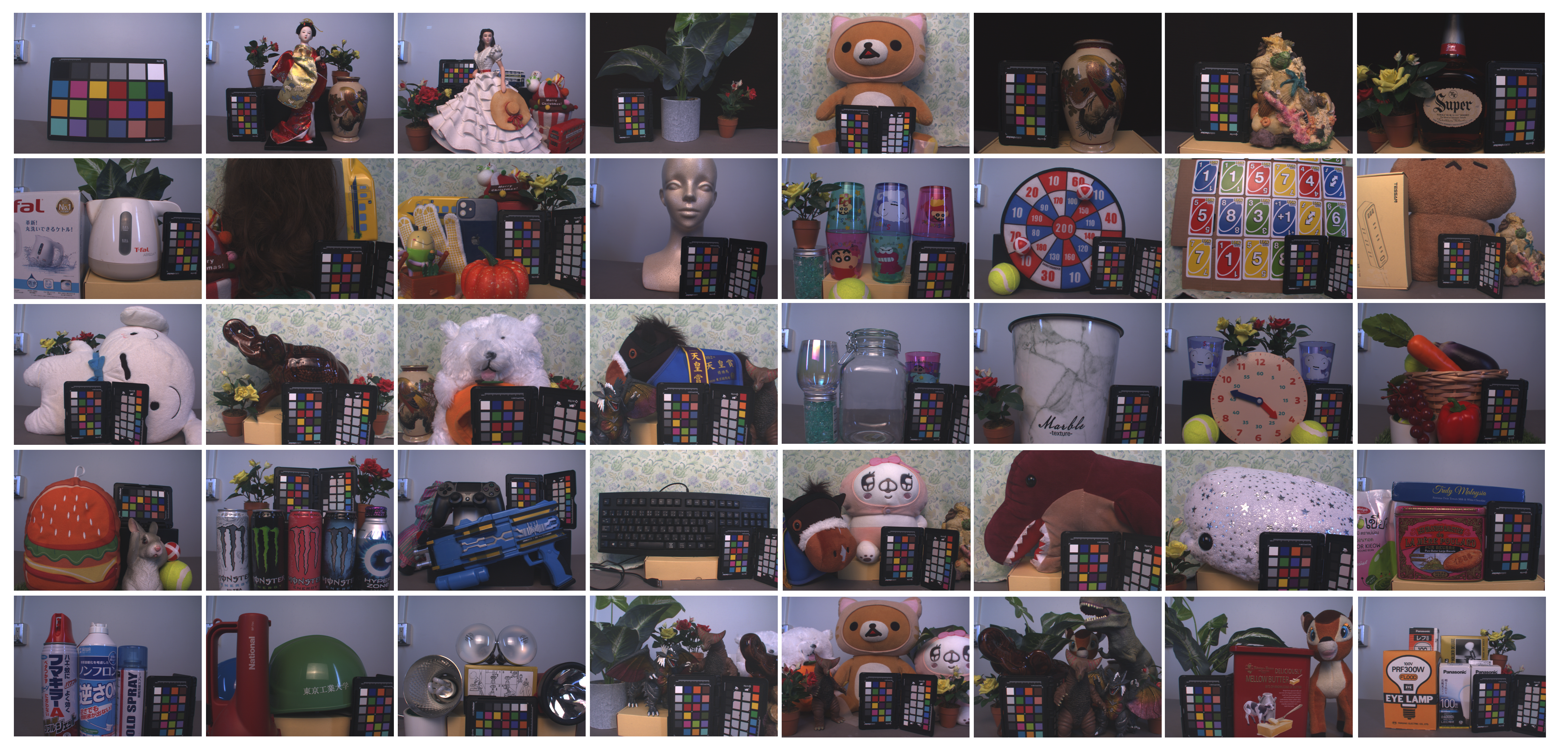Polarization Denoising and Demosaicking:
Dataset and Baseline Method
Muhamad Daniel Ariff Bin Abdul Rahman, Yusuke Monno, Masayuki Tanaka, and Masatoshi Okutomi
Institute of Science Tokyo
IEEE International Conference on Image Processing 2025
Table of Contents
Paper Abstract
A division-of-focal-plane (DoFP) polarimeter enables us to acquire images with multiple polarization orientations in one shot and thus it is valuable for many applications using polarimetric information. The image processing pipeline for a DoFP polarimeter entails two crucial tasks: denoising and demosaicking. While polarization demosaicking for a noise-free case has increasingly been studied, the research for the joint task of polarization denoising and demosaicking is scarce due to the lack of a suitable evaluation dataset and a solid baseline method. In this paper, we propose a novel dataset and method for polarization denoising and demosaicking. Our dataset contains 40 real-world scenes and three noise-level conditions, consisting of pairs of noisy mosaic inputs and noise-free full images. Our method takes a denoising-then-demosaicking approach based on well-accepted signal processing components to offer a reproducible method. Experimental results demonstrate that our method exhibits higher image reconstruction performance than other alternative methods, offering a solid baseline.
Proposed Method


Dataset
This dataset contains full 24-channel noisy color-polarization images, consisting of pairs of 12-channel noise-free ground truth images and 12-channel noisy test images, covering 40 scenes under three noise-level conditions (low, medium, and high). The 12-channel images in our dataset correspond to four RGB images captured at polarizer angles of 0, 45, 90, and 135 degrees. Our noisy dataset includes real-world noise, captured by adjusting camera settings and surrounding conditions. Each 24-channel dataset was acquired by rotating a linear polarizer (SIGMAKOKI SPF-50C-32 linear polarizer attached to a PH-50-ARS rotating polarizer mount) placed in front of a 3-CCD camera (JAI CV-M9GE 3-CCD camera). For each polarizer orientation, we captured 1,000 images and averaged 900 selected images (excluding 100 images to eliminate potential outliers) to generate the ground-truth image. We then selected one image from the 1,000 images as the noisy test image, which was used to create the input polarization mosaic image. For the evaluation of monochrome polarization demosaicking, we used the green-channel images from our color-polarization dataset.

Download Materials
(If you have any trouble to download the dataset, please contact ymonno(at)ok.sc.e.titech.ac.jp)
Publication
- Polarization Denoising and Demosaicking: Dataset and Baseline Method [PDF]
- Muhamad Daniel Ariff Bin Abdul Rahman, Yusuke Monno, Masayuki Tanaka, and Masatoshi Okutomi
- IEEE International Conference on Image Processing (ICIP), pp.2524-2529, September, 2025.